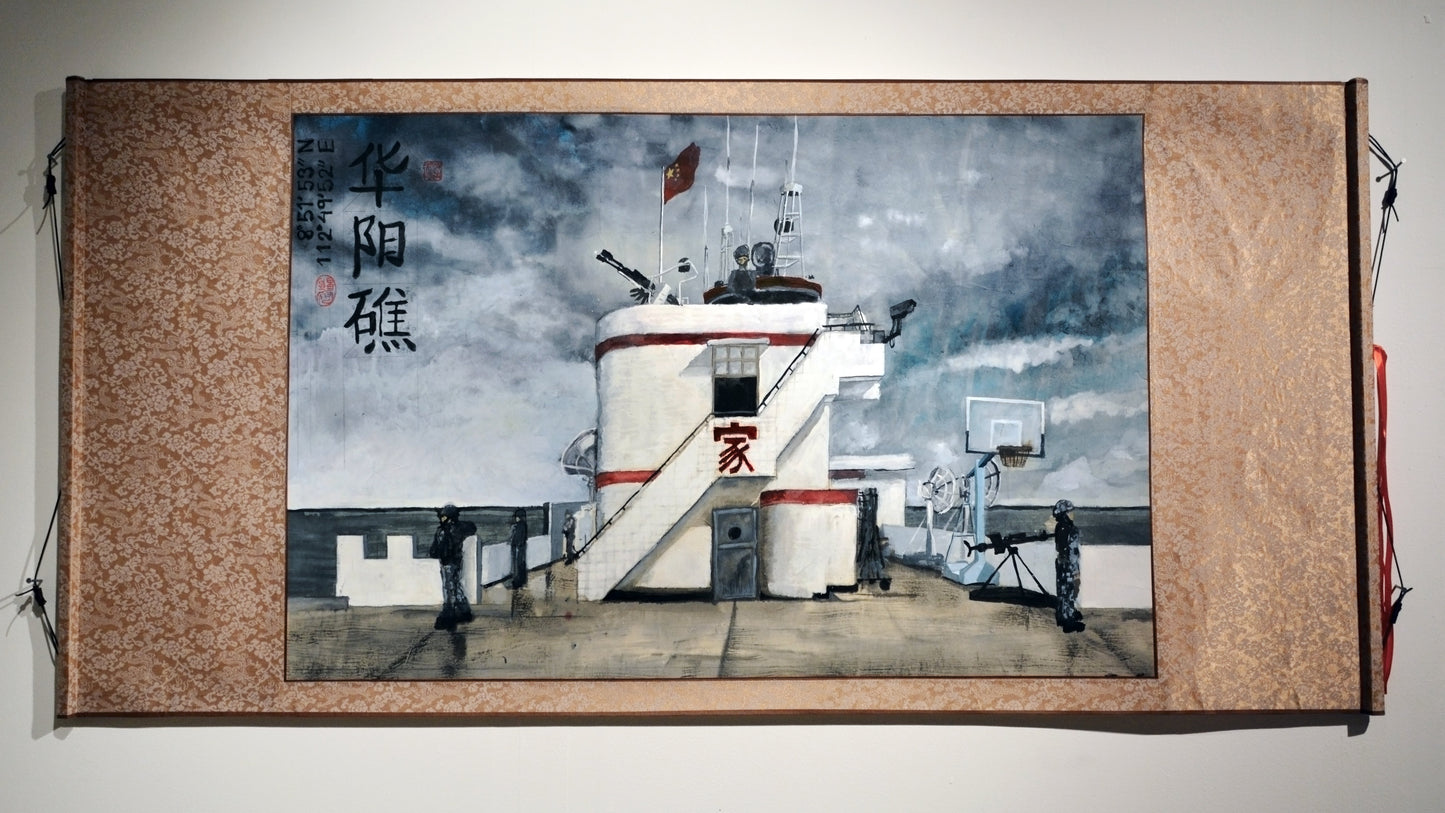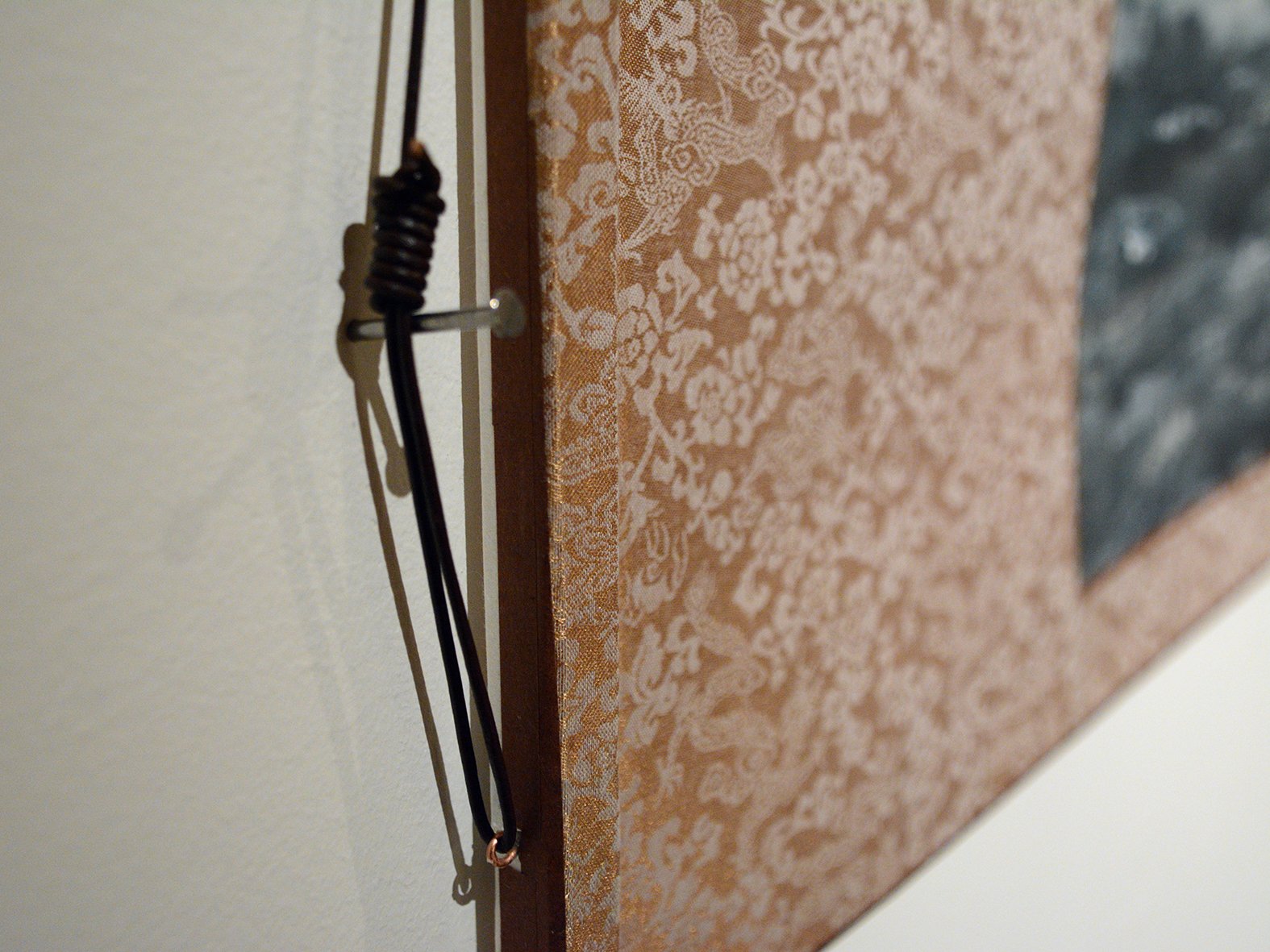Nikolaj Cyon
Territorial Control - Cuarteron Reef
Territorial Control - Cuarteron Reef
Couldn't load pickup availability
Share
Price includes 12% Swedish art VAT.
About this piece:
Territorial control is the fundament for power for individuals, states and corporations throughout history. Acquiring territory is often done by pure military might for states and by spending capital for individuals and corporations, but some times more unusual practices occur.
The usual justification for control over territory is historic ones about countless generation of ancestors telling the soil, or brave soldiers spilling their blood on the battlefield, for example the nazi idea of 'Blut und Boden'.
I'm interested in the more unusual methods and justifications.
Spratly Islands
The Spratly Islands are a group of coral reefs in the South China Sea which is the busiest shipping lane in the world and also rich in fish, potential oil and gas. There are 14 natural islands in the reef, seven are occupied by the Philippines, one by Taiwan and six by Vietnam, all countries with real land area close by. On a Chinese map from 1947 a line – known as the 'Nine-Dash Line' – marks all of the South China Sea as belonging to China. In 1987 China installed a small military post on Fiery Cross Reef on the pretext to build an oceanic observation station. The have since then built at first small temporary structures, later concrete forts and since 2014 artificial islands. By June 2015 china had created 13 million sqm of land on these seven submerged reefs: Cuarteron Reef, Fiery Cross Reef, Gaven Reef, Hughes Reef, Johnson South Reef, Mischief Reef and Subi Reef. This have been aptly called the 'Great wall of Sand'.
On July 12, 2016, the Permanent Court of Arbitration (PCA) ruled in a case between China and The Philippines that "there was no evidence that China had historically exercised exclusive control over the waters or resources, hence there was no legal basis for China to claim historic rights over the nine-dash line" , that "Spratly Islands are rocks under United Nations Convention on the Law of the Sea, and therefore are not entitled to a 200 nautical mile exclusive economic zone" and that "China's land reclamation projects and its construction of artificial islands in the Spratly Islands, had caused severe harm to the coral reef environment"
I thinkt that the idea behind the construction of artificial islands are to present the world with 'fait accompli' a physical Chinese presence that will be impossible to remove without outright war. The artificial islands are full of logistical, economic, cultural and most importantly military installations. This includes, deep sea harbours so large ships can berth and landing strips both vital infrastructure that have both civilian and military use, gun turrets and what according to military experts could be something similar to the Nazi german anti air fortification 'Flaktürme' which would deny any foreign power the airspace above the area. They have also raised monuments, green houses and fish farms. Hosted large celebrations of the first airplane to land on the islands with dance and musical performances.
Post-truth
In a post-truth world where regular warfare between sovereign countries is unthinkable, US drone attacks, Russian little green men, land grabbing in Africa and Chinese Great wall of Sand is the new low intense conquest where propaganda, wit and myth is as important as it was for Dido 2 800 years ago. I have tried to portrait these territorial claims in an art stile reminiscent of classical and folk art of the nation claiming the territory, to connect it to the national mythos and contrast it to the artificial nature of the claim. Russian folk art celebrates mythological knights decorated with beautiful intricate flowers often on wooden utensils such as a chopping board. Chinese ink landscapes celebrate the tranquility of the ancient hills that have eroded under millions of years and the beauty of unspoiled nature.










